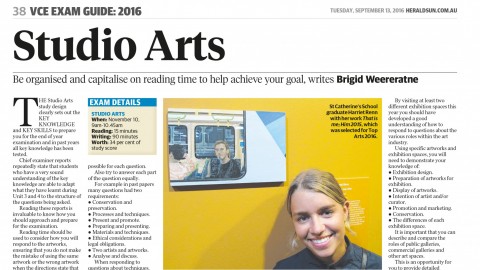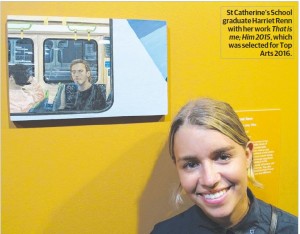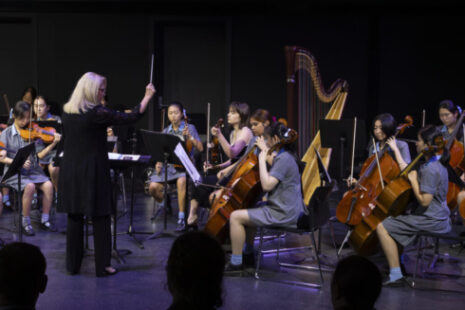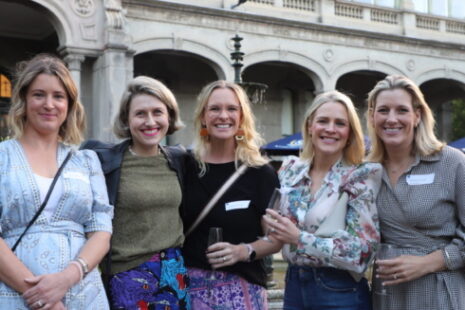VCE Exam Guide 2016: Studio Arts

Be organised and capitalise on reading time to help achieve your goal, writes Brigid Weereratne for The Herald Sun on Tuesday 13 September 2016.
THE Studio Arts study design clearly sets out the KEY KNOWLEDGE and KEY SKILLS to prepare you for the end of year examination and in past years all key knowledge has been tested.
Chief examiner reports repeatedly state that students who have a very sound understanding of the key knowledge are able to adapt what they have learnt during Unit 3 and 4 to the structure of the questions being asked.
Reading these reports is invaluable to know how you should approach and prepare for the examination.
Reading time should be used to consider how you will respond to the artworks, ensuring that you do not make the mistake of using the same artwork or the wrong artwork when the directions state that you must select a different artwork.
Be prepared to respond to artworks in the detachable insert to explain a variety of key knowledge across both units of study.
Using key words from the question in your answer will help you to focus your response on the key knowledge that the examiners are looking for.
Do not repeat the question, however, if for example you are asked about the development of style, you must use the word style and clearly explain how style is developed using specific aspects of the artwork to justify your response.
Use reading time effectively so you understand what is being asked; looking for questions that are seeking responses that have two or more requirements is one way to make sure you can achieve as many marks as possible for each question.
Also try to answer each part of the question equally. For example in past papers many questions had two requirements:
● Conservation and preservation.
● Processes and techniques.
● Present and promote.
● Preparing and presenting.
● Materials and techniques.
● Ethical considerations and legal obligations.
● Two artists and artworks.
● Analyse and discuss. When responding to questions about techniques, processes and materials, draw on your personal knowledge gained when making your own artworks.
It is vital that you use correct terminology relevant to the selected art form and discuss how these materials have been used in the making of a specific artwork.
Techniques of artists vary, so look at a good variety of artists who work in a specific medium to develop a deeper understanding of how artists apply materials to achieve different visual effects in an artwork.
This should help you develop a better understanding of the differences between the step by step process of using a particular art form and the individual techniques and style of the artist evident in the artwork.
When analysing artworks it is important to understand that formal art elements are not just a list but intrinsic components of how artists create their work and how we perceive the communication of ideas.
Aesthetic qualities are also linked to the development of individual style and can also be part of how the artist has used materials and techniques to express themselves.
Having a broad understanding of different art periods can help you see the different styles evident in the artworks you must use in your responses.
Try to avoid just describing what you see and analyse how art elements are used to create the aesthetic qualities.
When discussing the two artists studied this year be sure to have more than one example of their work to use as the basis of your response.
Practise writing responses that cover all aspects of this key knowledge.
Last year there were two questions about artists studied, so you need to adapt your answer to the different knowledge being tested.
It may help to create your notes under headings that reinforce the key knowledge with examples using two artworks.
For example:
● Historical and/or cultural context.
● Artworks or art form/s.
● Use of materials techniques and processes.
● Communication of ideas and meaning.
● Interpretation of subject matter.
● Influences.
● Use of aesthetic qualities.
● Development of style.
This type of list will help you understand the terminology used from the study design and should not be a surprise when you sit the examination.
So when you read the questions always ask yourself, what key knowledge will I use in this response and what specific evidence from the artworks will I use?
The phrasing of questions indicates that it is the artworks you must discuss, not the biographical outline of the artist.
The time and place the artwork was made is relevant to history and cultural context so you do need to provide dates or make reference to the art period or style.
Examiners do not want to read rote learnt or general responses about the copyright laws or the level of lux in an exhibition, they want you to apply this knowledge to the specific artworks that you have seen or are in the examination, as a means to explore a deeper understanding of the key knowledge.
By visiting at least two different exhibition spaces this year you should have developed a good understanding of how to respond to questions about the various roles within the art industry.
Using specific artworks and exhibition spaces, you will need to demonstrate your knowledge of:
● Exhibition design.
● Preparation of artworks for exhibition.
● Display of artworks.
● Intention of artist and/or curator.
● Promotion and marketing.
● Conservation.
● The differences of each exhibition space.
It is important that you can describe and compare the roles of public galleries, commercial galleries and other art spaces.
This is an opportunity for you to provide detailed descriptions and discussion of the exhibitions you visited, including any of the people you met who work in the art industry, the artworks you saw and the relationships established when exhibiting artworks.
Be mindful of the time constraints an examination presents.
In the weeks leading up to the exam you are encouraged to practise a variety of examination questions under timed conditions to ensure you are writing succinctly and can complete all examination questions in 90 minutes.
Your handwriting should be legible and all responses should use a good range of art language and terminology that clearly demonstrate your understanding of the key knowledge for Units 3 and 4.





